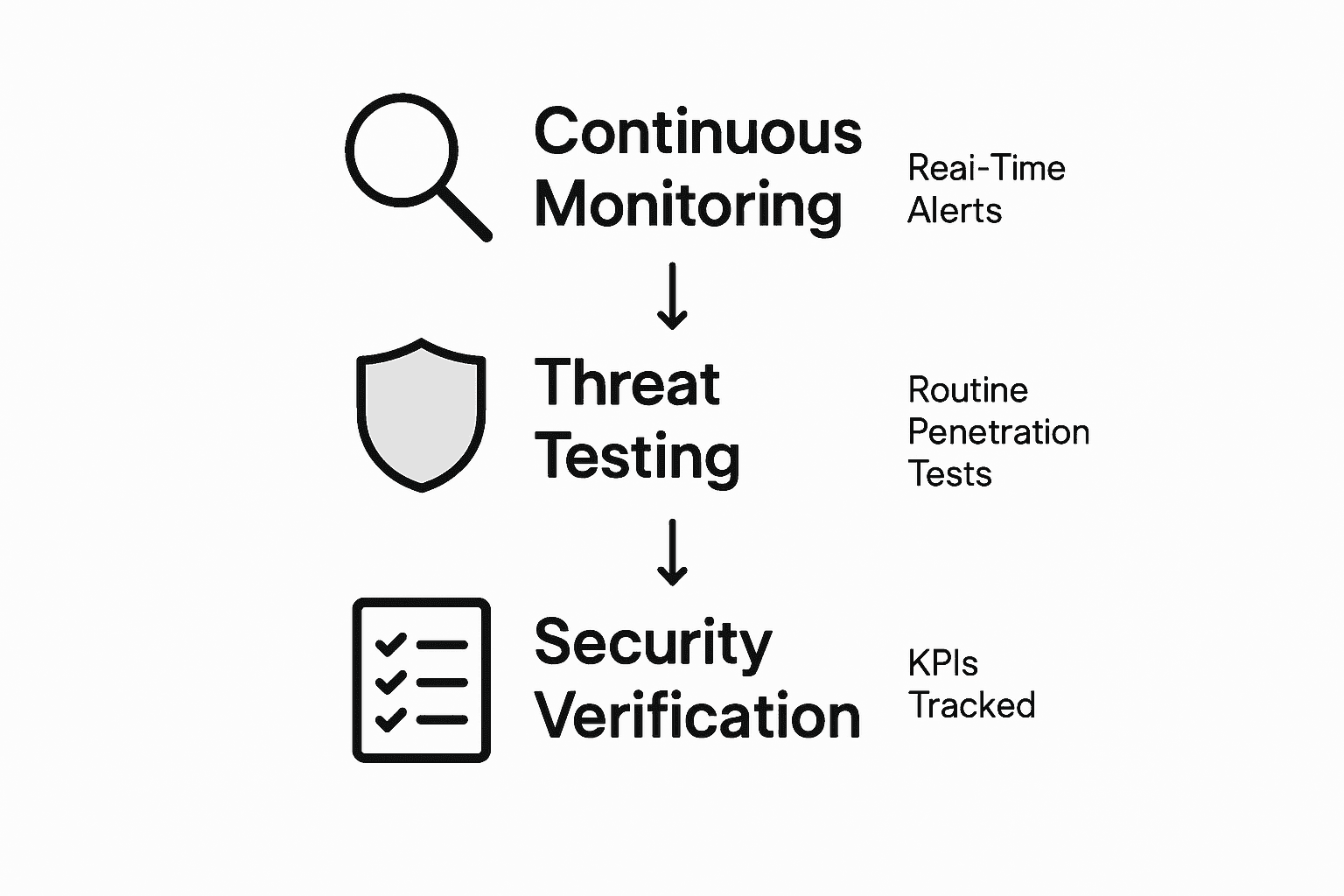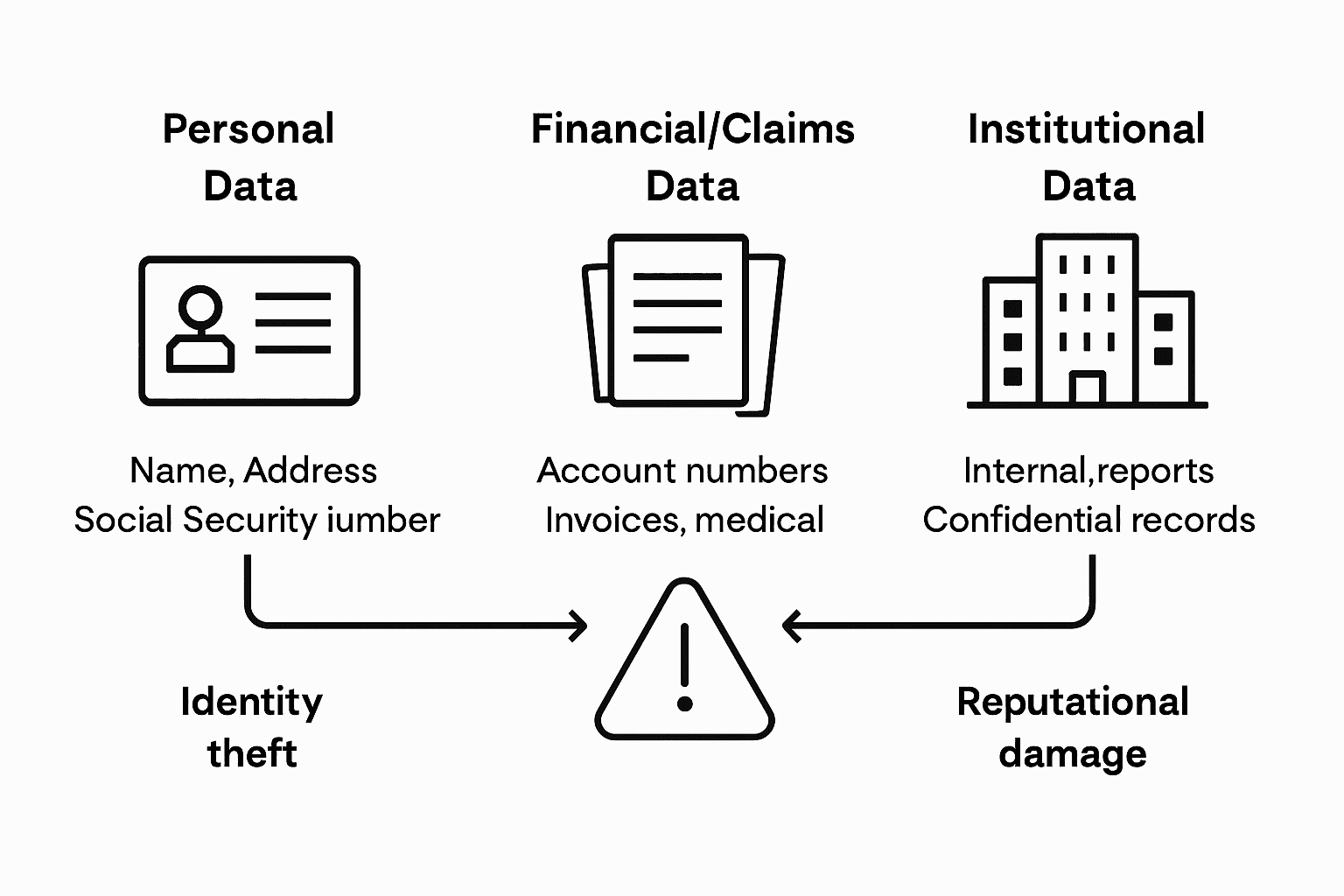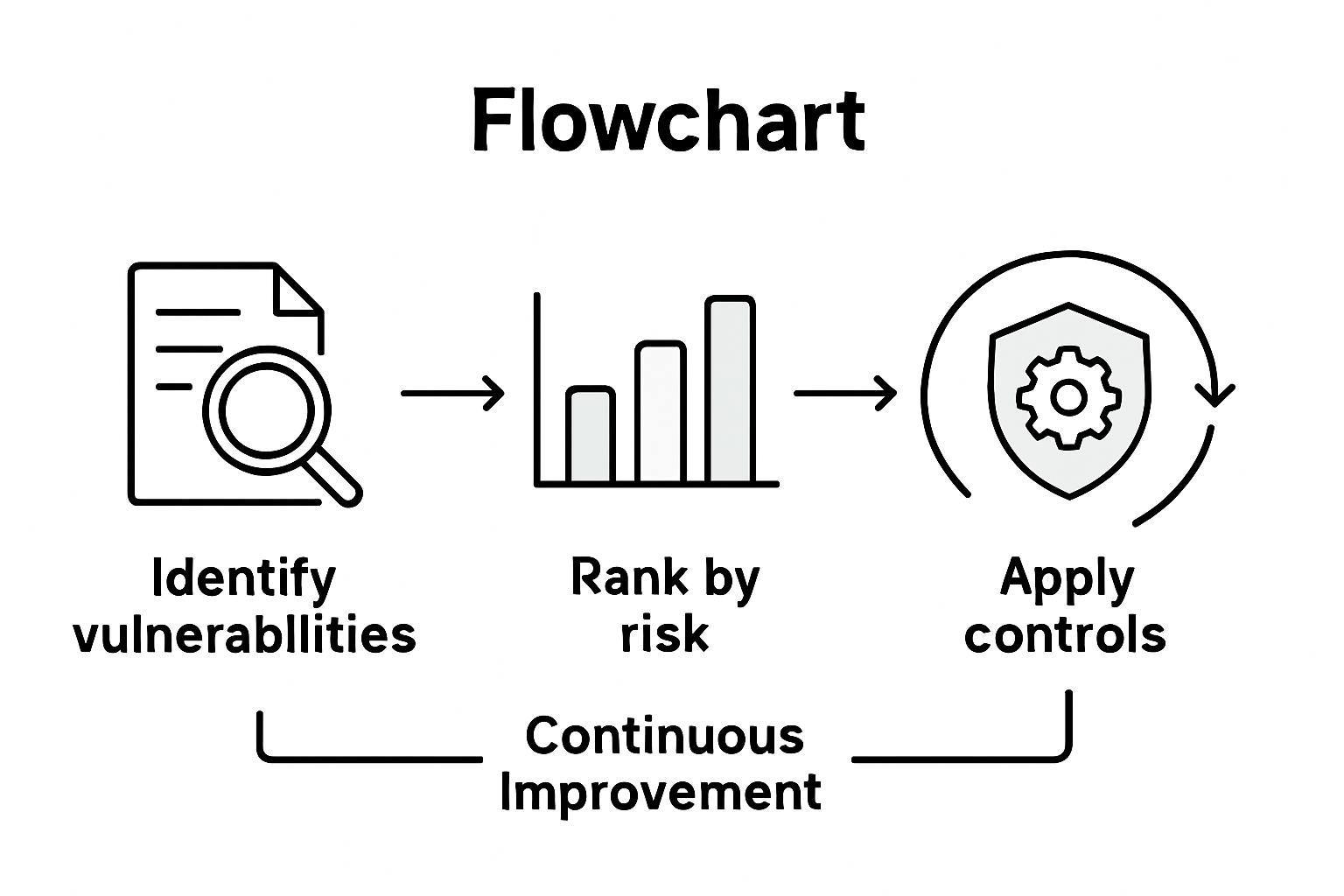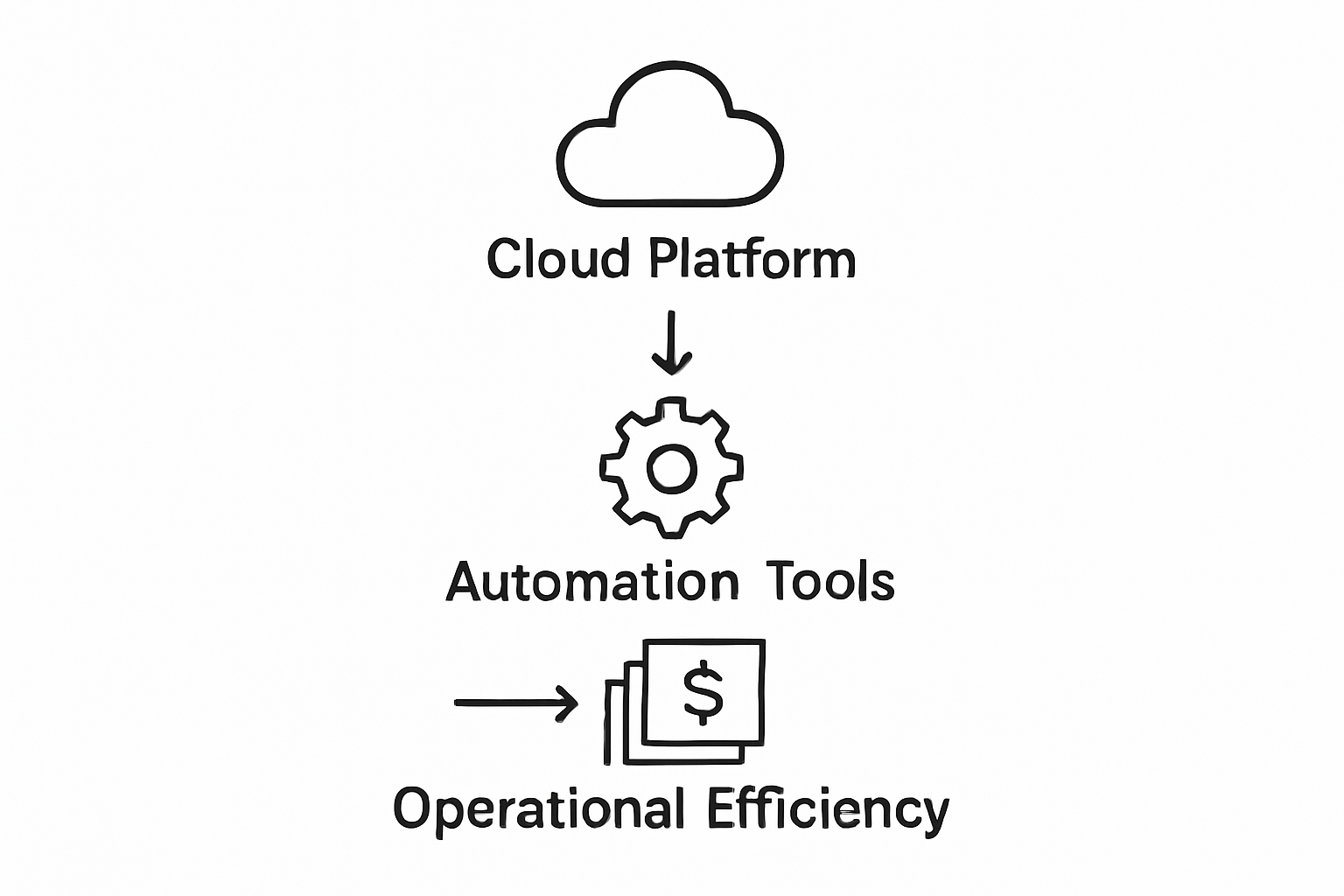Insurance Data Security Best Practices for Modern Insurers

Most british insurance organisations now face more cyberattacks than ever, with over 60 percent reporting at least one security incident last year. This rapid rise in digital risks makes strong data protection not just a technical concern but a business imperative. Understanding how to assess and strengthen every layer of your security framework can help protect sensitive customer data, maintain compliance with European standards, and safeguard your organisation’s reputation.
Table of Contents
- Step 1: Assess Current Data Protection Measures
- Step 2: Implement Robust Access Controls And Encryption
- Step 3: Integrate Secure Cloud And Api Solutions
- Step 4: Enforce Regulatory And Compliance Standards
- Step 5: Monitor, Test And Verify Security Continuously
Quick Summary
| Key Insight | Explanation |
|---|---|
| 1. Assess Current Protections | Conduct a thorough audit to identify vulnerabilities and create a roadmap for improved cybersecurity. |
| 2. Implement Access Controls | Adopt multi-layered authentication and encryption protocols to secure sensitive data from unauthorised access. |
| 3. Integrate Secure Solutions | Use compliant cloud and API services to modernise operations while ensuring high security standards. |
| 4. Enforce Compliance Standards | Regularly audit data handling protocols to meet regulatory requirements and protect legal integrity. |
| 5. Continuous Security Monitoring | Establish real-time monitoring and testing to ensure the resilience of your cybersecurity measures. |
Step 1: Assess current data protection measures
Assessing your current data protection infrastructure represents the critical first step in fortifying your insurance organisation’s digital security landscape. This comprehensive evaluation will help identify potential vulnerabilities and create a strategic roadmap for enhanced cybersecurity.
To begin, conduct a thorough audit of your existing data protection protocols by systematically reviewing all digital systems and data storage mechanisms. Focus on examining key aspects of data completeness and privacy policy frameworks that align with European regulatory standards. Start by mapping out your data flows tracking exactly how sensitive customer information moves through your organisation’s technological ecosystem. Investigate each touchpoint where personal data is collected, processed, stored or transferred ensuring robust encryption and access controls are uniformly implemented.
Your assessment should include a detailed inventory of current technological infrastructure examining hardware configurations, software applications, network architectures and cloud storage solutions. Engage your IT security team to perform vulnerability scans and penetration testing which will reveal potential weaknesses in your current systems. Pay special attention to authentication protocols, data encryption standards and incident response capabilities.
Professional Tip: Create a comprehensive data protection scorecard that objectively rates your current security measures against industry benchmarks and regulatory requirements, enabling continuous improvement and proactive risk management.
By meticulously evaluating your existing data protection framework, you establish a solid foundation for developing more resilient and secure insurance operations.
Step 2: Implement robust access controls and encryption
Implementing robust access controls and encryption is essential for protecting sensitive insurance data against potential cybersecurity threats. This critical step ensures that only authorised personnel can access critical information while maintaining comprehensive data protection standards.
Begin by adopting comprehensive information security management practices aligned with international standards that provide structured frameworks for data protection. Develop a multilayered authentication strategy incorporating strong password policies, multifactor authentication, and role based access controls. This approach limits system entry points and restricts data access based on specific organisational roles and responsibilities. Implement granular permission levels that ensure employees can only view and modify data directly relevant to their job functions.

Focus on implementing advanced encryption protocols for data both in transit and at rest. Utilise strong encryption algorithms that scramble sensitive information making it unreadable to potential unauthorised interceptors. Precision health data protection techniques offer valuable insights into developing comprehensive encryption strategies that can be adapted to insurance sector requirements. Regularly update encryption keys and maintain secure key management practices to prevent potential vulnerabilities.
Professional Tip: Conduct periodic access control audits and penetration testing to identify and address potential security weaknesses in your encryption and authentication systems, ensuring continuous improvement of your data protection framework.
By systematically implementing these robust access controls and encryption measures, you create a resilient security infrastructure that protects your organisation’s most valuable asset: customer data.
Below is a comparison of data encryption and access control strategies for insurance organisations:
| Strategy | Key Components | Business Impact |
|---|---|---|
| Data Encryption | Algorithms, key management | Prevents data breaches |
| Access Controls | Role-based permissions, MFA | Limits insider and external risk |
| Continuous Auditing | Regular reviews, testing | Identifies new vulnerabilities |
Step 3: Integrate secure cloud and API solutions
Integrating secure cloud and API solutions represents a transformative strategy for modernising your insurance organisation’s technological infrastructure. This critical step enables scalable, flexible, and robust data management while maintaining stringent security protocols.
Cloud infrastructure data protection standards provide essential guidelines for implementing secure cloud environments that comply with European regulatory requirements. Carefully evaluate potential cloud service providers, focusing on their ability to deliver comprehensive security frameworks, robust encryption mechanisms, and seamless API integration capabilities. Prioritise providers offering granular access controls, detailed audit trails, and transparent data handling practices that align with General Data Protection Regulation principles.
Implement API solutions that support privacy preservation techniques enabling secure data exchange between different technological systems. Design your API architecture with built-in security layers including comprehensive authentication protocols, request validation mechanisms, and encrypted communication channels. Develop a systematic approach to API management that includes continuous monitoring, regular security assessments, and rapid vulnerability remediation processes.
Professional Tip: Establish a dedicated cloud security governance team responsible for continuously reviewing and updating your cloud and API integration strategies, ensuring ongoing compliance and technological resilience.
By strategically integrating secure cloud and API solutions, you create a dynamic technological ecosystem that supports operational efficiency while maintaining the highest standards of data protection.
Step 4: Enforce regulatory and compliance standards
Enforcing robust regulatory and compliance standards is crucial for maintaining your insurance organisation’s legal integrity and protecting sensitive customer information. This comprehensive approach ensures your operations align with the most rigorous European data protection and operational resilience requirements.
Digital operational resilience regulations provide a structured framework for implementing comprehensive compliance strategies. Develop a systematic approach to regulatory adherence by conducting thorough internal audits, mapping all data processing activities, and establishing clear documentation trails that demonstrate ongoing compliance. Create detailed policies that explicitly outline your organisation’s data handling protocols, including precise guidelines for data collection, storage, processing, and deletion.
Implement a comprehensive compliance management system that integrates certification mechanisms to validate your organisation’s adherence to regulatory standards. Establish a dedicated compliance team responsible for continuously monitoring regulatory changes, updating internal protocols, and conducting regular risk assessments. Develop training programmes that educate staff about regulatory requirements, ensuring every team member understands their role in maintaining data protection and operational standards.
Professional Tip: Implement a quarterly compliance review process that proactively identifies potential regulatory gaps and allows for swift, strategic adjustments to your compliance framework.
By systematically enforcing regulatory and compliance standards, you create a resilient organisational infrastructure that protects both your customers and your business from potential legal and operational risks.
Step 5: Monitor, test and verify security continuously
Continuous monitoring and verification of security measures form the backbone of a robust data protection strategy for modern insurance organisations. This critical approach ensures that your technological infrastructure remains resilient against emerging cyber threats and maintains the highest standards of data integrity.

Developing a comprehensive data lineage and security verification framework requires implementing sophisticated monitoring tools and systematic testing protocols. Establish a proactive security assessment programme that includes regular vulnerability scans, penetration testing, and comprehensive risk analysis. Create automated monitoring systems that provide real-time insights into your organisation’s security performance, enabling immediate detection and response to potential vulnerabilities.
Financial data verification standards recommend developing multi-layered verification processes that go beyond traditional security checks. Design a holistic approach that includes continuous log analysis, anomaly detection mechanisms, and regular security audits. Implement advanced analytics tools that can identify subtle patterns and potential security breaches, ensuring your organisation remains one step ahead of potential cyber risks.
Professional Tip: Develop a security scorecard that tracks key performance indicators for your monitoring and verification processes, providing a clear and objective measure of your organisation’s security resilience.
By consistently monitoring, testing, and verifying your security infrastructure, you create a dynamic and adaptive defence mechanism that protects your most valuable digital assets.
Here is a summary of the key data protection steps and their primary objectives:
| Step | Main Focus | Core Outcome |
|---|---|---|
| Assess current data protection measures | Identify vulnerabilities | Build security foundation |
| Implement robust access controls and encryption | Restrict & secure access | Protect sensitive information |
| Integrate secure cloud and API solutions | Modernise infrastructure | Enable safe, scalable operations |
| Enforce regulatory and compliance standards | Ensure legal adherence | Avoid penalties, prove compliance |
| Monitor, test and verify security continuously | Continuous improvement | Maintain resilience against threats |
Elevate Your Insurance Data Security with IBA’s Cloud-Native Solutions
In today’s rapidly evolving insurance landscape, safeguarding sensitive customer data while ensuring seamless digital transformation is a complex challenge. Your organisation needs robust access controls, end-to-end encryption, and continuous security verification integrated into a scalable, API-first platform that complies with all European regulatory requirements. The risk of data breaches and regulatory penalties demands a modern core system that supports secure cloud infrastructure and precise operational resilience.
IBA’s IBSuite is purpose-built to empower insurers like you to overcome these challenges. Our secure insurance platform covers the entire insurance value chain with built-in security features, including comprehensive encryption standards and granular access controls. Designed for digital-first insurers, IBSuite enables rapid product innovation and ensures evergreen compliance with evolving regulations. Take the proactive step to transform your data protection strategy and streamline operations with a partner trusted by global leaders.
Discover how IBSuite can fortify your organisation’s digital security while accelerating your business growth. Book a personalised demo today at IBA Demo and experience the power of a cloud-native, secure insurance platform. Don’t wait until vulnerabilities impact your business – explore how to modernise your core with IBA’s secure cloud and API solutions and start your journey towards seamless compliance and operational resilience now.
Frequently Asked Questions
What are the first steps to assess current data protection measures in an insurance organisation?
Start by conducting a thorough audit of your existing data protection protocols, evaluating all digital systems and data storage methods. Track and map out the flow of sensitive customer information to identify vulnerabilities and establish a strategic roadmap for improvement.
How can insurers implement robust access controls?
Insurers should adopt a multilayered authentication strategy that incorporates strong password policies and role-based access controls. Create permission levels that ensure employees can only access data relevant to their job functions, and regularly review these access rights to maintain security.
What encryption practices are essential for protecting sensitive insurance data?
Implement strong encryption protocols for data both in transit and at rest using advanced encryption algorithms. Regularly update encryption keys and maintain secure key management practices to ensure the ongoing protection of sensitive information against unauthorised access.
How can organisations ensure compliance with regulatory standards?
Develop a compliance management system that integrates regular internal audits and clear documentation trails for data handling. Train staff on regulatory requirements and conduct quarterly compliance reviews to identify and remediate any potential gaps swiftly.
What ongoing measures should insurers take to monitor and verify their data security?
Establish a proactive security assessment programme that includes regular vulnerability scans and penetration testing. Implement automated monitoring systems to provide real-time insights, enabling immediate detection and response to potential vulnerabilities.
Recommended
- Insurance Data Security: Risks and Solutions for Insurers
- Cybersecurity for Insurers, tools and best practices – Digital Insurance Platform | IBSuite Insurance Software | Modern Insurance System
- Insurance Data Security Best Practices for P&C Insurers
- Cloud Security and Compliance for Insurers: Navigating 2025 Risks – Digital Insurance Platform | IBSuite Insurance Software | Modern Insurance System






























